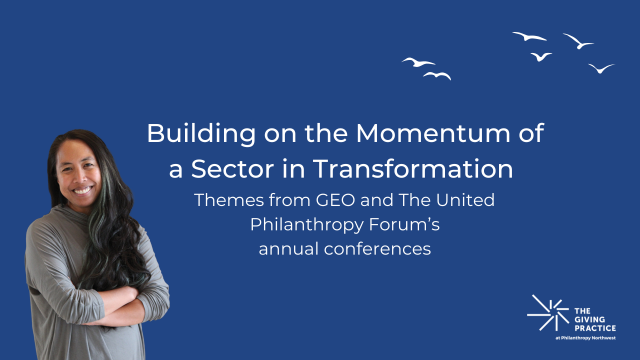“Hi! I’m a member of Glacier Swim Club. I’m collecting pledges for our annual Aqualaps fundraiser. This year, I’m swimming 200 laps. You can make a lump sum or pledge a certain amount per lap to support the team. If you pledge 1 cent a lap, you'll donate $2, if you pledge 5 cents a lap, you'll donate $10, if you pledge 10 cents a lap, you'll donate $20.”
My sister and I spent years going door-to-door to our Juneau, Alaska neighborhood with this memorized pitch and a chart showing different pledge amounts.
The neighbors would look up forlornly at my mom, waiting at the end of the driveway with Denee, our German shepherd, as I continued rambling on about pledge amounts per lap. At some point, they’d cut me off saying, “Can I just do a lump sum?” and wander off for their checkbooks. As we got older, we got better at this and the neighbors grew accustomed to our yearly request. Besides, could they really expect my family to buy their football raffle tickets and softball calendars if they didn’t support our Aqualaps?
A few weeks ago, this Aqualaps spiel suddenly popped back into head after a 12-year absence. I had just accepted a position as a program associate of grants and impact at The Alaska Community Foundation after two years at Rasmuson Foundation, most recently as one of Philanthropy Northwest's Momentum Fellows. While I knew aspects of my job would be similar — helping disperse grant money around Alaska — the process would be dramatically different as I shifted from a private foundation to a community one.
I was in the final weeks of my fellowship at Rasmuson Foundation — my first professional experience in philanthropy. In trying to find relevant personal examples to help me wrap my head around my new role at The Alaska Community Foundation, Aqualaps was the first thing that popped into my head. Why was this fundraiser that I once begrudgingly took part in each year returning to me with newfound significance? Was I suffering from a faded and overly rosy memory of my childhood? Perhaps, although I still remember a great deal of trudging around on dark evenings in the Juneau slush to ask for pledges. And then there was always the ordeal of having to swim the 200 laps early one Saturday morning at the end of the fundraising period. So why Aqualaps?
Aqualaps sneakily taught me about nonprofits long before I knew anything about grants strategies and governance structures. My teammates and I, a bunch of K-12 kids, got hands-on training on how to raise funds to keep monthly dues low, support teammates from all economic backgrounds, fly to swim meets all over Alaska, buy equipment, pay our coach's salary and the pool's rent — and figure out how to get the same supporters to give year after year. An added benefit, many of our parents served on the team’s board, so our family dinner conversations would include discussions of our budget challenges.
Aqualaps and swimming taught me how important grants and community support are to nonprofits. Despite all of our fundraising, there were some things my team just couldn't buy or replace. Our fins were torn and stretched out, and many of our kickboards were missing chunks, even broken in half. We would complain to our coach and he would raise an eyebrow and ask us if we had the X amount of dollars to purchase them? As a fellow at Rasmuson Foundation, when I processed a small grant request for a small rural swim team. I was not surprised to see fins and kickboards in their request. If we had trouble getting these items in Alaska’s capital, it had to be even more difficult in rural villages, where shipping costs can be overwhelming. Despite monthly dues, community fundraisers and many in-kind donations, there were still some needs that required the greater Alaskan community to fulfill.
Pooling Donations for Maximum Impact
My Aqualaps memories have given me an easy way to explain my new job to friends and family: "A bunch of individuals give to the team, which then uses the pooled funds to give kids something productive to do after school. Everyone wins.” We all know community foundations are far more complicated than that, but after a month at my new job, I think part of my initial analogy still makes sense. Imagine if you gave each little swimmer $10; he or she might be able to afford swim lessons ... for a month. There’s a smarter way to help out. If we pool our gifts to the team, the team could compound the power of all those individual donations and distibute them effectively, helping it become one of the top swim programs in the state while boosting outcomes for hundreds of kids.
As I become more immersed in my Alaska Community Foundation work, my swim team comparison will probably fade away again, though it will continue to subconsciously contribute to my personal bird's-eye view of philanthropy.
When I was asked at the start of the Momentum Fellowship what philanthropy meant to me, I said it was about leveling the playing field. (Can't resist those sports analogies!) Throughout the fellowship and my work at Rasmuson Foundation, I was able to refine that answer. Today, I think about philanthropy as collecting, investing and strategically redistributing wealth to give everyone a chance to play — or swim — on the proverbial team. I know the Momentum Fellowship will continue to enrich my career through relationships with the cohort of fellows and the staffs of Philanthropy Northwest and Rasmuson Foundation. Thank you!
Kelsey Potdevin was a Momentum Fellow hosted by the Rasmuson Foundation. In September, she joined The Alaska Community Foundation as program associate of grants and special projects. Read more about the Momentum Fellowship on our website.


